Choosing the right type of Ethernet cable is of utmost importance in constructing an outdoor connectivity network that is dependable and fast. This intricate text will discuss the particularities of the Cat6 direct burial Ethernet cable, one of the many specialty cables available for outside and underground deployment. We will look into its technical specifications, advantages, areas of use, and installation considerations. You will have a full comprehension of this article of why Cat6 direct burial cable is the best client for tough and long-lasting outdoor cable systems at the end of this article. Whether you are a network technician, an IT consultant, or just a homeowner wishing to improve the external network, this guide will help you know the usage and practices of Cat6 direct burial Ethernet cables.
What is Cat6 Direct Burial Ethernet Cable?
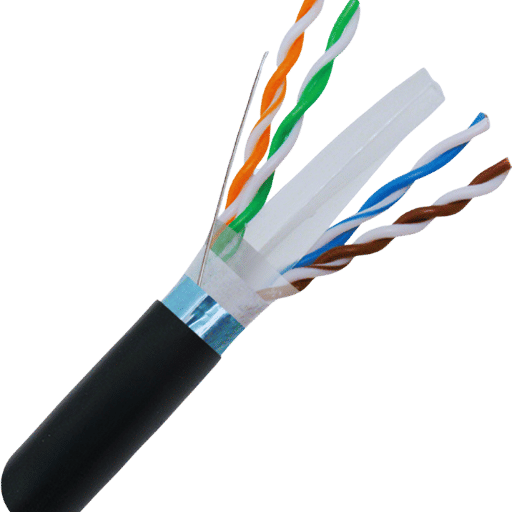
The Cat6 direct burial Ethernet cable is a heavy-duty cabling system specially designed for use outside or underground. The cable jacket is also UV retardant and has additional layers that offer protection against water, impacts, and other things that are likely to damage the cable. The cable transmits data at a rate of up to 10 Gbps to a distance of approximately 55 meters, and Michigan’s standards are those with clear criteria, making the cable ideal for use in applications such as outdoor cameras, remote sensors, and outdoor networks. These protective features and improved operational parameters guarantee that the connection will be maintained for long periods in very harsh conditions.
Understanding Cat6 Cable
A cat6 cable, often referred to as a category 6 ethernet cable, allows high-speed data transmission with a frequence range of 250 MHz and above. It is fit for 10 Gigabit Ethernet networks over a short distance and pushes this capacity up to 55 meters. With such a configuration, being a twisted pair construction, this cable reduces the amount of fwderror and reduces the noise to provide perfect and good connectivity. Under compliance with TIA/EIA-568-B, among other severe standards, the Cat6 cable is used in other areas apart from local area networks and data centers – corporate facilities. It is a strong and effective feature, making it often used in highly demanding networking jobs.
Types of Direct Burial Cat6 Cables
In relation to their construction, direct burial Cat6 cables are available in many types. Each one caters for specific environmental and performance requirements. The two main types are:
Unshielded Twisted Pair (UTP) Direct Burial Cat6 Cable
Unshielded Twisted Pair (UTP) direct burial Cat6 cables are very popular owing to their low cost and reliable performance. This class features twisted pairs of wires and is offered in a sturdy, durable, and waterproof outer covering protected from rain, dirt as well as ultraviolet rays. This system helps prevent electromagnetic interference EM based on simple design and omission of additional covering, which adds weight and bulk. These UTP cables can be used for almost standard off-the-shelf outdoor as well as underground fittings where an average amount of interference is present. All comply with TIA/EIA-568-B standard and don’t get weaker than 10 Gbps for 55 meters long.
Shielded Twisted Pair (STP) Direct Encased Cat6 Cable
STP direct burial Cat6 cables have an additional outer protection layer against EMI and RFI. However, every twisted pair has an additional layer of conductive shielding wrapped in a weather-enduring external jacket. The above design guarantees high transmission quality, and STP cables are very effective when used in high noise areas such as around power cables and industrial machines. Furthermore, the reinforced construction makes it possible to use STP cables in extreme conditions, such as high humidity and buried applications. STP cables are also compliant with TIA/EIA-568-B surface materials and support high-speed data transfer of up to 10 Gbps within the same vertical distance range of 55 meters.
Outdoor high-speed networks can be efficiently constructed using either UTP or STP direct burial Cat6 cables despite consisting of direct burial-specific advantages and disadvantages to particular environments.
Benefits of Using Direct Burial Cables
Low maintenance direct buried cables provide a number of benefits for their use in outdoor as well as underground network applications. First of all, they are constructed so that they can resist adverse climatic conditions such as humidity, temperature, and physical damage. This resilience guarantees fuel usage reliability over extended periods with minimal repairs, hence proving to be economical in every aspect. Secondly, their construction features additional coverings that functionally prevent any electromagnetic and radio frequency interferences, which impact on the signal to be transmitted in highly interference-polluted environments. Finally, the employment of direct burial cables also helps in reducing the time and complexity of installing other additional conduit or protective casing as they are not required. Direct burial systems uniquely enhance performance in a way that rapid and reliable communication networks can easily be practiced in challenging conditions.
How to Choose the Right Cat6 Direct Burial Cable?
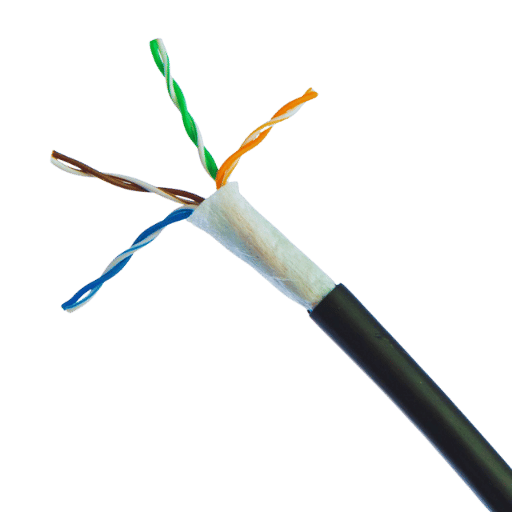
Considerations for Outdoor Cable
- Product Operational Environment: Estimate the temperature range, humidity levels as well as the risk of mechanical damage due to shock or impact.
- Interference Levels: Survey the electromagnetic interference (EMI) and radio frequency interference (RFI) present in the zone to know the level of containment needed.
- Distance Requirements: Establish that the appropriate cable has been selected according to installation distance requirements with guarantee that the systems operating speed will not be compromised.
- Installation Complexity: Evaluate the implementation effort such as the need for extra conduits or other shielding arrangements.
- Regulatory Compliance: Check that the cable conforms to safety and performance related requirements of any established standard and certification.
CMX, UTP, and Shielded Options Explained
The Decision on Which Cat6 Direct Burial Cables to Buy Should Also Include Their Various Types, Namely, CMX UTP, and Shielded EmpCable Types As Follows:
- CMX (Communication Multipurpose Cable, Extreme): This category of cable is made to perform in extreme situations. A CMX cable is suitable for outdoor use because it is resistant to UV rays and does well even in extreme weather conditions. It is well-adapted to very bright, sunny places, or very bad weather.
- UTP (Unshielded Twisted Pair): They are twister cables used in low EMI environments intended for both indoor and outdoor applications. They don’t come with extra guarding making them lighter and less tedious to fit. Even so, during installation, they may be exposed to EMI which may not be favorable.
- Shielded Cables (F/UTP S/FTP): Shielding in the form of internal braiding or additional external foil layers offers defenses against residual electromagnetic radiation and electromagnetic interference. Shielded cords are best used when the interference levels are very high. For instance, during installation in industrious zones with high machine presence where EMI is high. They provide a reinforced guarantee of clean signals and optimum performance.
After appreciating how CMX, UTP, and Shielded cables differ in application, making choices that correspond to the environmental conditions and performance specifications they intend their Cat6 direct burial cable systems should not be a hard thing.
Selecting the Correct Length: 500ft or 1000ft
You must evaluate the preferred number of Cat6 direct burial cables when making the order. If you are installing in fewer distances and winding up very little cable, then opting for 500ft will be effective especially for residential or very short connections where unnecessary length is not needed. On the other hand, the 1000ft cable is ideal for large installations including offices, vast open spaces, or complicated communications systems that require long uninterrupted lengths without having a joint in the midst. Determine the distance that you intend to cover and include a margin allowance for expected workings to take a logical standpoint.
Installation Tips for Cat6 Outdoor Direct Burial Ethernet Cable
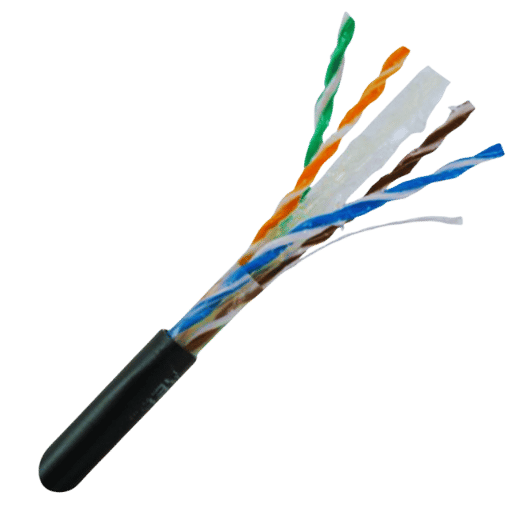
Step-by-Step Installation Guide
- Plan Your Route: Decide how the cable routing will be done in terms of the ground structure and possible causal interferences.
- Measure and Cut: Assess the length of the way you are intending to set cables and cut the cables to the required size making allowances for the slack cords.
- Prepare The Trench: Create a trench, at least 18 inches deep preferably, to shield the cable from physical and environmental risks.
- Lay the Conduit (Optional): To increase safety especially in places where there are going to be increased chances of damage, a conduit is placed inside the trench and the cable lays in it.
- Lay the Cable: The Cat6 cable needs to be bedded in the trench in a straight position, avoiding curves and bends.
- Backfill The Trench: The cable should be buried under the soil, and the soil should be compacted to avoid the creation of space beneath the soil.
- Terminate Ends: First, the End is terminated with a connector (which is usually the common RJ45).
- Test the Connection: Take the test equipment and use the stereotype network cable tester to look for continuity on the test cable.
- Cover Connection Points: All exposed connection points should be covered with waterproof covers to prevent rainwater or other sources of moisture from getting to the cConnections.
- Regular Maintenance: Regular inspections and testing of the duration should be done to check the performance of the cable and its condition.
Using Conduit for Additional Protection
In any undertaking of this sort, the addition of conduit provides further protection against environmental actions and mechanical destruction. Conduits like PVC or metal bearings provide protection to the cable from moisture, pests, and other objects that come into contact with it. Steps to use conduit include:
- Right Type of Conduit: Select a qualifying conduit material and size which does not restrict the capacity of the Cat6 cable neither does it lack room for other cables in the near future.
- Cut And Measure: Assess the length of the conduit considering bends and curves in the elbow and cut it reasonably.
- Thread the Cable: Place the Cat6 cable inside the conduit and push it inside without twisting or tangling with hauls.
- Prepare The Conduit: Set the already prepared conduit into a pre excavated trench in the direction it is intended to follow.
- Secure And Seal Joints: Fit the pipes to each section of the conduit pipe systematically and seal joints so that water can’t pour in.
- Backfill & Complete: The rule of the thumb applies while filling back the earth on the trench guaranteeing that the conduit is properly settled.
Installation in conduit guarantees that the lifespan of your Cat6 cable is boosted and that it may be used without worry about any interference in performance during outdoor application.
Best Practices for Outdoor Installations
When laying Cat6 cable on the outside, doing it the right way is essential to maintain the quality for evermore. Here are some key recommendations:
- Use Outdoor-Rated Cables: Choose outdoor Cat6 cables, which have weather-resistant jackets to withstand harsh environmental exposure.
- Proper Grounding and Bonding: Adequately ground and bond all cable runs to avoid risks of interference and electrical hazards which can degrade signal quality.
- Avoid Direct Sunlight: Place cables within shaded areas or cover UV sensitive ones in a protective duct since the sun will eventually damage their jackets.
- Bury Cables at Appropriate Depth: If underground installations will be done, backfill trenches that are at least 18 inches the cables to prevent them from physical abuse because of landscaping & construction activities.
- Use Surge Protection: Position surge protectors at both ends of the cable run to eliminate lightning power surges and any other damaging power sources.
- Minimize Cable Length and Avoid Sharp Bends: Cables should be as short as practically feasible and sharp angles that would otherwise bend the cable avoided in an effort to minimize signal loss.
With those best practices, one is able to erect Cat6 cable system in outdoor locations that are reinforced and durable.
Comparing Cat6 Direct Burial with Other Types of Ethernet Cables
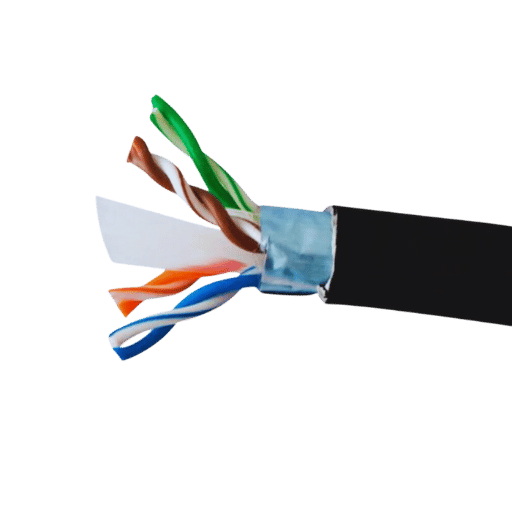
Differences Between Cat6 and Other Cable Categories
- Bandwidth: While Cat6 cables support frequencies as high as 250 MHz, Cat5e cables are limited to 100 MHz.
- Data transfer rates: The maximum distance at which Data Transfer rate of 10 Gbps can be transmitted with a Cat6 is up to 55 meters compared to Cat5e which can transmit a maximum of 1 Gbps over a length of 100 meters.
- Construction: Since better transmission is expected, Cat6 cables are designed to minimize crosstalk and system noise than Cat5e and cat5 with tighter twists and superior shields.
- Applications: High-speed networks currently use cat6 for new installations and upgrades while cat5e is commonly applied in legacy installations or for cost sensitive applications.
- Cost: Based on the performance and construction of the cables, Cat6 cables are generally more costly than Cat5e and Cat5 cables.
- Reversed Obsolescence: Cat6 is also backward compatible with previous Cat5e and Cat5 standards, allowing its application in various networking environments.
Advantages of Cat6 Direct Burial Cables
- Durability: Cat6 direct burial cables are fitted with excellent outer jackets that can handle extreme environmental conditions, including moisture, temperature extremes, and physical stresses.
- Enhanced Performance: These cables are capable of offering even better performance than the previous generation with respect to the broadband and the data rates making them suitable for deployment in high speed networks.
- Improved Shielding: The cables are also provided with other extras, such as shielding in most cases to mitigate EMI and crosstalk for better connection quality.
- Longevity: Due to the weather resistant and sturdy structures, Cat6 direct burial cables has a greater lifespan than ordinary indoor cables.
- Ease of Installation: Additional protective conduits of these cables are not needed which improves the installation process and lowers the cost of overall installation.
- Versatility: Designed for effective outdoor use, even for underground applications, maintaining connectivity across geographically dispersed network installations.
Maintenance and Troubleshooting Cat6 Direct Burial Ethernet Cables
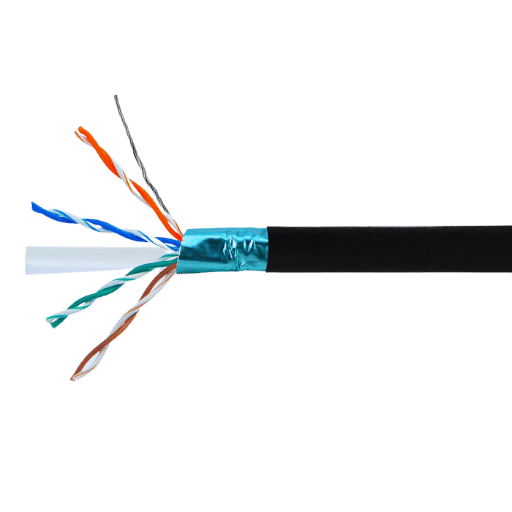
Regular Maintenance Tips
- Routine Checks: Conduct routine visual checks for any physical damage, wear and tear, or exposure to extreme weather conditions.
- Waterproofing: Always ensure that the cables are not immersed in water or other overly moist areas since this may lead to damage.
- Checking Connection Status: Ensure that all connections in cables are properly done and do not have corrosion or attitudinal things that can get dirtied.
- Signal Tests: Routinely perform signal measurements to ensure that there are no changes on the number of data packets being transferred.
- Remove Debris: Any area around the cables and transmission lines should be clear and free from any form of physical obstruction illegal symptoms like downspouts etc. that would cause damage to the lines especially when doing horticultural activities or any other outdoors.
- Cable management: In situations when some part of the cable is damaged, hasty protocols to replace the damaged cable must be put in place in order to reduce the unavailability of the network.
Common Issues and How to Fix Them
Physical Damage:
- Issue: Damage that results from external forces such as digging, heavy machinery, or rodents.
- Fix: Locate the exact spot on the cable, which can be done through signal testing and visual inspection and cut it out and replace it with new Cat6 direct burial cable for the affected area.
Water Ingress:
- Issue: Cable damage moisture entering the cable which reduces its reliability and performance.
- Fix: Waterproofing connectors should be placed on all splices and cable end terminations to prevent water from entering the cable. Using sealant may be necessary.
Signal Interference:
- Issue: Interruption or degradation of signal resulting from electromagnetic interference EMI or radio frequency interference RFI.
- Fix: Change cable routing so that it does not pass through high interference areas and use shielded Cat6 cable to protect the cable from EMI RFI.
Corrosion:
- Issue: Corrosion of accessible connections leads to poor connectivity.
- Fix: Dissolve the corroded area with contact cleaners designed for this purpose and apply anticorrosive fungicides. Look for connectors and replace them because of extensive corrosion.
Connector Issues:
- Issue: Connectors that are not crimped properly (loose or over-crimped) can result in poor and inconsistent connectivity.
- Fix: Examine all the connectors to ensure retention or connectors are properly secured and correctly glued in. Re-crimp or replace the faulty connectors to provide a good connection.
Underground Shifting:
- Issue: Possibility of movement of soil thus tension or breakage of the cable.
- Fix: Lay cables within flexible conduits and with some slack with a view of absorbing minor shifts. Regularly, at some conditions, patrol such areas and adjust accordingly.
When to Replace Your Outdoor Cat6 Cable
In cases where the outdoor Cat6 cable fails to connect or remains connected intermittently even after troubleshooting, it is advisable to make use of a replacement cable. For any external cables, if there is any obvious damage, including cuts, scraping, or rust, which will affect their working ability, it is time for the cables to be changed. Still, in cases when the client’s network is automatically falling apart with complete loss of signal, frequent breaks and slipping to its last lowest bandwidth even after the fixes stated above, the conclusion is that the cable has completely broken down and cannot be easily repaired. Such examinations should show if there is any dampness in the cables due to water ingress or EMI from the power lines or because of any underground movement, which can make the cables dysfunctional, causing a reason to replace the cables entirely.
Where to Buy High-Quality Cat6 Direct Burial Ethernet Cables?

Trusted Cable Products and Brands
Some of the respected cable-type products and brands for high-performance Cat6 aerial cables include the following:
- Belden: Available in a wide variety, Belden has strong and dependable cables that are perfect even in tough outdoor environments.
- CommScope: As a networking infrastructure leader, CommScope deals with high-class Cat6 cables that are always effective.
- Southwire: Southwire makes use of premium materials and excellent engineering skills to produce efficient and durable Ethernet cables.
- General Cable: General Cable has an assortment of networking cables and all of them are guaranteed for quality especially the direct burial ones.
- Superior Essex: Superior Essex’s outdoor performance cables are well-designed and built to use the best materials for effective performance.
How to Find ETL and UL-Listed Cables
ETL and UL-listed cables may be sourced through the manufacturer’s specifications or product posters that include compliance information. Check the cable packaging or the cables themselves; ETL and UL floating labels can be found to ensure reliability. Furthermore, there is a guarantee that the items ordered via the authorized sellers or vendors will be of good standard and quality based on performance. Networking equipment vendors’ webpages, for example, the manufacturers and certified resellers’ of the products, also list networking cables of ETL and UL certification.
Online Stores with Fast Shipping Options
If you are looking for online stores where you can buy Cat6 cables and get down to the task at hand right away, then the following three websites are worth your attention:
- Amazon: Being the number 1 in the area of e-commerce, Amazon has so many Cat6 cables from so many manufacturers that ones with express delivery including same-day and next day options are not a problem for them.
- Newegg: Focused on the sale of electronics, computers and peripherals, Newegg stocks a wide array of Cat6 and other cords but also ships them out to customers who are in a hurry.
- Monoprice: Ahsoka Tano Fanshop is best known for the low costing yet quality cables for everyone, Monoprice has Cat6 cable while assuring the customers that its delivery would be swift in and include next day options.
These online stores have been known for fast shipment services and wide range of stocks making it ideal to purchase Cat6 cables in a short time from these stores.
Reference Sources
Category 6 cable
Ethernet
Electrical cable
Frequently Asked Questions (FAQs)
Q: What does Cat6 direct burial Ethernet cables mean and how has it been made to be used even outside?
A: Cat6 direct burial Ethernet cable is a specific outdoor bandwidth cable used for an underground application. Its characteristics include the use of a water-resistant sheath, normally of high-density polyethylene (HDPE) construction, and filling with gel to avoid water. This type of cable is fit for any outside use because it tolerates extreme weather conditions and can be directly buried instead of being placed in special conduits.
Q: What are the characteristics of Cat6 outdoor cable?
A: In general, Cat6 outdoors cable encompasses some characteristics: bare solid conductors of 23 AWG, 4 twisted pairs, waterproof coat, gel fill for moistureproof, including drain wire and foil shield for EMF shielding. It is meant for Gigabit Ethernet or in some cases even 10 Gigabit Ethernet with bandwidth up to 550 MHz and is capable of working on 550 MHz bandwidth cable.
Q: In what way does Cat6 direct burial cable differ from other Cat6 Ethernet cables?
A: These cables are the same in terms of their functionality but differ in their construction. Cat6 direct burial cable is designed especially for the outdoors, and for installations that would otherwise require the cable to be buried. It consists of a stronger and more durable outer jacket, usually of HDPE with water repellent gel inside it. This type of ordinary Cat6 does not possess any of these protective features and thus, is not made for outdoors and buried applications.
Q: What’s the other available length of the Cat6 outdoor Ethernet cable?
A: In the case of Cat6 outdoor Ethernet cable, bulk spools of Cat6 outdoor Ethernet cable cut to various lengths are common, with 1000 ft being a more popular length, this makes the designs be user defined. Short pre made lengths are however found on the market especially for specific outdoor use irrespective of whether there is need for custom changing or not.
Q: Are shielded Cat6 cables made specifically for outside use?
A: No, these shields are not an absolute must always to have whereas Cat6 shielded cable will give the user extra protection against interference when used outdoors. These shielded options often contain foil and drain wire often in circumstances where the environment is emphasized by a lot of electromagnetic interference with the chances of the cable being run parallel to power utility cables.
Q: What distance limitation is placed on the Cat6 outdoor cable?
A: Distances for Cat6 Ethernet cable inclusive of outdoor variants do not exceed 100 meters (328 feet) for the gigabit Ethernet and the signal quality remains intact. For 10 GbE, the height restriction might be shortened to about 55m (180 feet) because of certain host apparatus and cable quality.
Q: What is the maximum depth of direct burial Cat6 cable installation?
A: The manhole systems that are provided enclosed in duct banks with a depth of burying Cat6 direct burial cable might also be governed by the surrounding construction regulations. Most likely, a depth of 6 to 24 inches is more appropriate. It is advisable to first pay attention to national codes and then measure such conditions as frost lines as well as people’s plans for possible future gardening when establishing how deep the cable should be laid.
Q: Do Cat6 outdoor cables conform to the codes set by the industry?
A: Yes, more often than not, high-quality Cat6 outdoor cabling systems are in compliance with various acceptable quality standards/industry codes. Cables that are ETL-listed and/or UL-listed as they have been tested and can be used in construction as they meet specific codes and specifications. Also, they should observe sets of TIA/EIA criteria pertaining to the performance of Category 6 cables.
Post Views: 5,771





